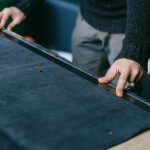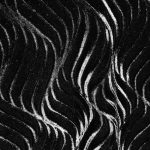Looking to stay ahead of the curve in automotive design? Loop automotive fabrics may just be the game-changer you've been waiting for.
These innovative textiles are setting the stage for the next big trend in vehicle interiors. With a focus on sustainability and modern design, loop fabrics offer a fresh approach to automotive upholstery.
As the industry continues to embrace eco-friendly materials and cutting-edge aesthetics, the appeal of loop fabrics is undeniable.
Get ready to explore the potential of this exciting new trend and discover how it's reshaping the future of automotive interiors.
Key Takeaways
- Loop fabrics offer a winning combination of durability and style, making them a practical choice for automotive upholstery.
- Loop fabrics contribute to sustainable practices in automotive design by being made from recycled materials and reducing environmental impact.
- Advancements in textile technology have allowed loop fabrics to maintain their appearance and structural integrity over time.
- Loop fabrics are a sustainable alternative to traditional materials, enhancing sustainability in automotive design.
Evolution of Automotive Fabrics
As you delve into the evolution of automotive fabrics, it becomes evident that advancements in technology have played a pivotal role in shaping the industry. Innovative materials and textile technology have revolutionized the way automotive fabrics are designed and manufactured.
Over the years, traditional fabrics like wool and leather have been supplemented, and in some cases replaced, by synthetic materials such as nylon, polyester, and microfiber. These innovative materials have been engineered to be more durable, lightweight, and resistant to wear and tear, making them ideal for use in automobiles.
Textile technology has also played a significant role in the evolution of automotive fabrics. Advancements in weaving and dyeing techniques have allowed for the creation of fabrics that aren't only aesthetically pleasing but also highly functional. For instance, the development of water-repellent and stain-resistant fabrics has been a game-changer in the automotive industry, providing car owners with fabrics that are easy to clean and maintain.
Advantages of Loop Fabrics
If you're in the market for automotive fabrics, loop fabrics offer a winning combination of durability and style.
These fabrics are designed to withstand the wear and tear of daily use while still maintaining a sleek and versatile appearance.
With loop fabrics, you can expect a long-lasting solution that doesn't compromise on aesthetics.
Durability in Loop Fabrics
When choosing automotive fabrics, you'll appreciate the durability of loop fabrics, making them a practical and long-lasting choice for your vehicle's interior.
Loop fabrics offer several advantages in terms of durability:
- Resistance to Wear and Tear: Loop fabrics are known for their ability to withstand regular use without showing signs of wear and tear, making them ideal for high-traffic areas in your vehicle.
- Ease of Maintenance: These fabrics have low maintenance requirements, as they're resistant to stains and can be easily cleaned with regular vacuuming and spot treatment.
- Longevity: Loop fabrics maintain their appearance and structural integrity over time, ensuring that your vehicle's interior continues to look and feel great for years to come.
Stylish and Versatile Designs
Loop fabrics offer a wide range of stylish and versatile designs, making them a popular choice for vehicle interiors. The fashionable durability of loop automotive fabrics means you can enjoy both aesthetic appeal and long-lasting performance.
These fabrics come in an array of eco-friendly textures, allowing you to embrace sustainability without sacrificing style. Whether you prefer a classic, sophisticated look or a more modern and trendy vibe, loop fabrics have got you covered.
With their versatility, you can find designs that seamlessly integrate with various car models and interior styles. The combination of durability, style, and eco-friendliness makes loop fabrics a top choice for those seeking a balance of fashion and function in their vehicle interiors.
Sustainability in Automotive Design
You can integrate sustainability into automotive design by utilizing eco-friendly materials and manufacturing processes.
Here are three key ways to incorporate sustainability into automotive design:
- Environmental Impact Assessment: Conduct a thorough assessment of the environmental impact of the materials and processes used in automotive design. By understanding the lifecycle of the materials, from material sourcing to manufacturing to disposal, you can make informed decisions to minimize the environmental footprint of automotive products.
- Utilization of Recycled Materials: Consider using recycled or upcycled materials in automotive design. By incorporating materials that have been repurposed or recycled, you can reduce the demand for new resources and minimize waste, contributing to a more sustainable approach to automotive design.
- Embracing Renewable Resources: Explore the use of renewable resources, such as bamboo, hemp, or organic cotton, in automotive interior design. These materials offer a more sustainable alternative to traditional synthetic materials, reducing the reliance on non-renewable resources and lowering the overall environmental impact of automotive products.
Loop Fabrics in Modern Vehicles
Incorporating loop fabrics into modern vehicles can further enhance sustainability in automotive design by promoting the use of durable, eco-friendly materials. Loop fabric technology offers an innovative approach to automotive interior design, providing a sustainable alternative to traditional materials. This textile development is gaining traction in the automotive industry for its potential to reduce environmental impact while maintaining high performance. Below is a table highlighting the benefits of loop fabrics in modern vehicles:
| Loop Fabric Advantages | Description |
|---|---|
| Sustainability Innovation | Loop fabrics contribute to the use of eco-friendly materials, reducing the environmental footprint of vehicle interiors. |
| Durability | These fabrics are designed to withstand wear and tear, ensuring longevity and reducing the need for frequent replacements. |
| Versatility | Loop fabric technology allows for a wide range of design possibilities, offering flexibility in creating modern and stylish vehicle interiors. |
Loop fabrics are not only a step forward in sustainability but also a testament to the potential for sustainable innovation in automotive design. As the industry continues to prioritize eco-conscious solutions, loop fabrics are poised to play a significant role in shaping the future of vehicle interiors.
Design Trends in Loop Fabrics
When it comes to design trends in loop fabrics, there are several key points to consider.
Firstly, loop fabrics offer numerous benefits such as durability, stain resistance, and texture options that can elevate the overall aesthetic of a vehicle's interior.
Additionally, the use of sustainable loop textiles is becoming increasingly popular, aligning with the growing demand for eco-friendly materials in the automotive industry.
Loop Fabric Benefits
With loop automotive fabrics, you can achieve a modern, textured look that's both durable and stylish.
Here are three key benefits of loop fabrics:
- Advantages: Loop fabrics offer numerous advantages, such as resistance to pilling and snagging, making them ideal for high-traffic areas in cars.
- Sustainability: Loop fabrics are often made from recycled materials, contributing to sustainable practices in automotive design.
- Performance: These fabrics are designed to withstand the wear and tear of daily use, making them a practical choice for automotive upholstery.
Loop fabrics provide a unique texture and visual appeal, while also offering durability and sustainability. These characteristics make them a compelling choice for designers and automotive enthusiasts looking for a blend of style and functionality.
Sustainable Loop Textiles
How can sustainable loop textiles revolutionize automotive fabric design for your next project? Sustainable loop textiles are paving the way for eco-friendly materials in the automotive industry. By embracing the circular economy model, these fabrics are designed to be regenerative and minimize waste, making them an ideal choice for environmentally conscious designers. Here's a comparison of traditional fabrics versus sustainable loop textiles:
| Aspect | Traditional Fabrics | Sustainable Loop Textiles |
|---|---|---|
| Material Source | Virgin resources | Recycled materials |
| Production Process | Linear, wasteful | Circular, minimal waste |
| End of Life | Often discarded | Recyclable and reusable |
| Environmental Impact | Higher footprint | Lower carbon footprint |
Choosing sustainable loop textiles aligns with the growing demand for environmentally responsible design practices and supports the shift towards a more sustainable automotive industry.
Loop Fabric Applications
Explore the diverse applications of loop fabrics and discover the latest design trends for incorporating them into your automotive projects. When it comes to loop fabric innovations, the automotive industry is embracing this trend with enthusiasm.
Here are some current automotive interior design trends using loop fabrics:
- Textured Surfaces: Utilizing loop fabrics to create textured surfaces within the interior of vehicles, adding depth and visual interest to upholstery and trim.
- Customization: Incorporating loop fabrics to offer customizable options for car interiors, allowing for personalized designs and patterns that cater to individual tastes.
- Sustainability: Integrating loop fabrics made from recycled materials to promote sustainable practices in automotive interior design, aligning with the growing eco-conscious consumer mindset.
The Future of Loop Automotive Fabrics
As you consider the future of loop automotive fabrics, envision a world where sustainability and durability are seamlessly woven into the fabric of car interiors.
Future trends in automotive fabrics are leaning heavily towards eco-friendly and durable materials. Technological advancements have enabled the development of loop automotive fabrics that not only offer superior strength and longevity but also contribute to reducing the environmental impact of car manufacturing. These fabrics are designed to withstand the rigors of daily use while also being recyclable, thereby aligning with the growing focus on sustainability in the automotive industry.
In the coming years, we can anticipate witnessing an upsurge in the use of loop automotive fabrics as more car manufacturers prioritize environmentally conscious materials in their designs. The integration of innovative technologies will continue to enhance the performance and aesthetics of loop automotive fabrics, making them an attractive choice for both manufacturers and consumers.
As the automotive industry moves towards a more sustainable and eco-friendly future, loop automotive fabrics are poised to play a pivotal role in shaping the car interiors of tomorrow.
Frequently Asked Questions
How Do Loop Fabrics Compare to Traditional Automotive Fabrics in Terms of Durability and Longevity?
Loop fabrics offer comparable durability to traditional automotive fabrics, with the added benefit of increased longevity. When compared, loop fabrics demonstrate excellent durability and longevity, making them a promising choice for automotive upholstery.
Are There Any Potential Drawbacks or Limitations to Using Loop Fabrics in Automotive Design?
When considering loop fabrics for automotive design, it's crucial to weigh the benefits of design flexibility and material sustainability against potential limitations and drawbacks such as application challenges and durability concerns.
What Specific Environmental Benefits Do Loop Fabrics Offer Compared to Other Materials Used in Vehicle Interiors?
Loop fabrics offer significant environmental benefits compared to other materials used in vehicle interiors. Their sustainable manufacturing process reduces environmental impact. Material durability and design innovation contribute to their integration challenges.
Can Loop Fabrics Be Easily Integrated Into Existing Modern Vehicle Designs, or Are There Significant Challenges in Doing So?
Integrating loop fabrics into modern vehicle designs comes with challenges. While loop fabrics offer environmental benefits, their compatibility with existing designs may require adjustments. However, with innovation and adaptation, integration is achievable.
What New and Innovative Design Features or Techniques Are Being Explored Specifically With Loop Fabrics in Automotive Design?
You're exploring new and innovative loop fabric designs in automotive design. Design techniques for loop fabrics in automotive design are being developed to enhance aesthetics and functionality. Manufacturers are experimenting with creative ways to incorporate loop fabrics into vehicles.
- Is It OK to Wear Tweed in Summer? - April 24, 2024
- How Do You Wash Tweed? - April 24, 2024
- Are Tweed Coats Waterproof? - April 24, 2024





